Magento 2 Blog Extension
MageComp’s Magento 2 Blog Extension allows you to create, manage, and publish blog posts from your admin panel and without ever having to use third-party content management systems, like WordPress. Publish store announcements, product advice, SEO-rich articles, and engage with your customers without ever leaving your Magento store.
- Add a full-featured blog section to your Magento 2 store
- Modern & customizable post design with layout options
- Related posts & products on blog and product pages
- Sidebar Widgets to quickly reach other blogs
- Improve user interaction with the commenting option
- Built-in SEO settings for each post
- Social Share Buttons to increase blog visibility
- Previous & Next post navigation for seamless reading
- Manage everything from a single dashboard
- Hyvä Addon Available
30 DAY
MONEY BACK
1 YEAR
FREE UPGRADE
1 YEAR
FREE SUPPORT

Still Using a Third-Party CMS for Your Magento 2 Blog?
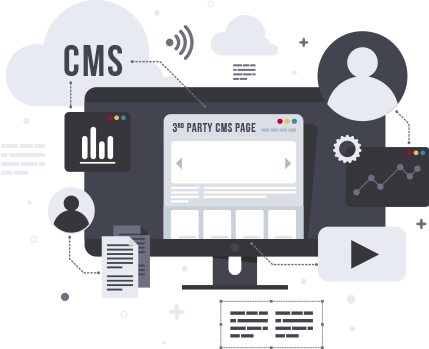

Say goodbye to complicated integrations and hello to an effortless in-store blogging experience with MageComp's Magento 2 Blog Extension!


This truly is an all-in-one extension that encompasses all of the full blogging functionality straight into the Magento 2 store. You can create posts, manage categories, add SEO metadata, and related products, without leaving your Magento admin panel. You can create engaging content to share with your customers, increase your search rankings, and keep your customers updated without ever having to switch systems or write a line of custom code.
Features of Magento 2 Blog Extension
Add Blog to Magento 2 Store
Add a fully functional and customizable blog to your Magento store by way of direct integration. So you can forget about relying on a third-party CMS like WordPress and manage it all from the Magento backend.
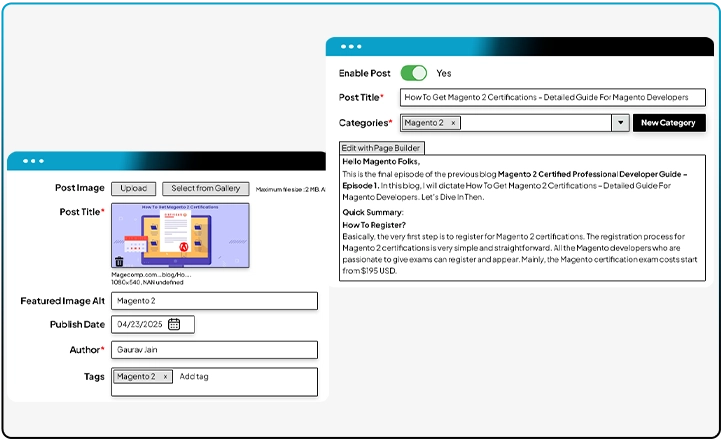

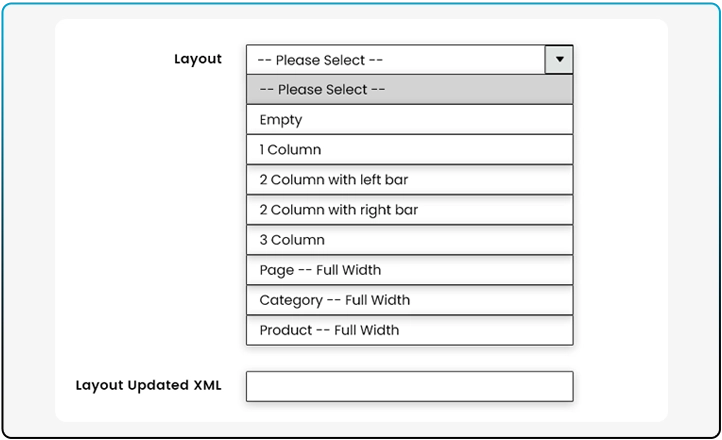

Multiple Post Design Options
Choose from a few different post designs to adhere to your brand and styling. Then, change the style at any time in order to differentiate the appearance of your blog section.
Display Related Posts
For the user who wants to be able to explore your content more, display related blog posts underneath each one. These related posts will keep your readers reading longer and increase page views.




Display Related Products
You can link products to your blog content and display them on the post page. This is ideal for blogs that discuss product use cases, tutorials, and reviews.
Comment System
Give your customers a voice and start engagement with the built-in comment section, along with the option for third-party solutions like Facebook comments.
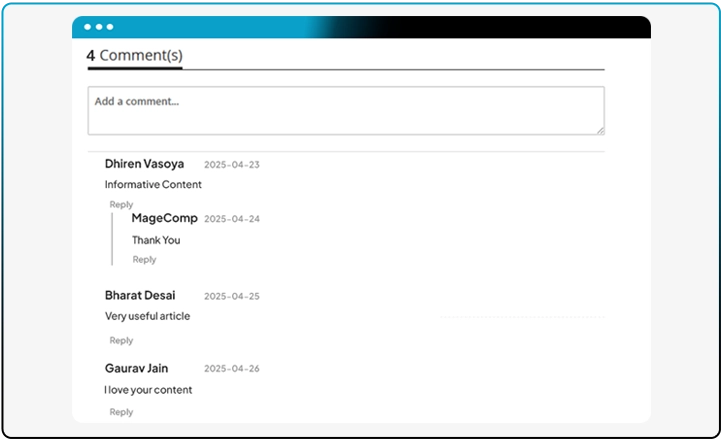



Permalink Settings
Build SEO friendly and easy-to-remember blog URLs (e.g., /blog/post-title). You can modify and customize the structure of your blog URLs and/or your permalink slugs throughout your blog.
SEO Optimization
Have the ability to control the indexing of every post, category & tag by search engines using the meta fields, including title, description, and keywords.


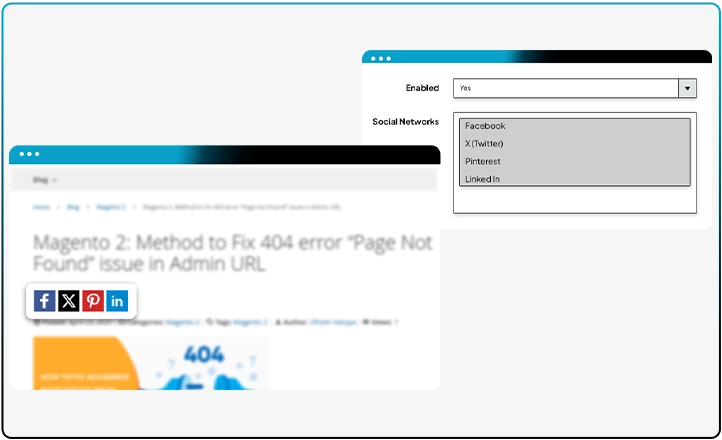

Social Share Buttons
Add social share buttons for each blog post, so your readers can quickly share your content on their favorite social media platform.
Comparing Magento 2 Blog Extension vs Other 3rd Party Blog Integrations
| Feature / Aspect | Magento 2 Blog Extension (MageComp) | Third-Party Blog Integration |
|---|---|---|
| Platform Integration | Native Magento 2 integration | Requires bridging or syncing with Magento |
| Performance | Optimized to perform seamlessly with Magento | Performance will vary due to loading external content |
| SEO Control | Has built-in SEO and OG settings | Separate configuration for SEO settings |
| Admin-Friendly | Able to manage the blog through the Magento Admin Panel | Will need to log into two different dashboards |
| Design Flexibility | Will inherit the store theme automatically | Will need to customize the blog to match the Magento theme |
| Security | Inherits Magento's highly vetted security protocols | Must maintain separate security updates for the third-party blog |
| Widgets & Extensions | Provides the built-in ability to use blog widgets (e.g., tags, search, recent posts) | Will require building a plugin or setup in the blog |
| Customization | Can easily be customized through standard Magento layout and CSS options | Must have a custom build or plugin for customization |
| Comments Support | Built-in comments system | Require plugins like Disqus for comment support |
| Related Products / Posts | Ability to show related posts and related products easily | Will require a custom build or plugin to create a related product or related post feature |
| Canonical & OG Tags | Direct support for SEO meta tags | Must manually create canonical and OG tags or rely on plugins |
| Cost & Maintenance | Single-time setup, which is all included within Magento | Ongoing costs for hosting, syncing data, plugin support, and other maintenance will need to be incurred |
Additional Features of Magento 2 Blog Extension
Next & Previous Post Navigation
Easily add navigation buttons to the end of your blog posts so your readers can easily navigate to the next or previous article without having to return to the main blog page.
View Count Tracker
Automatically count the number of views per blog post and display the result. A View Count Tracker helps provide you with trending content and provides social proof.
Blog in Top Navigation
There’s an exclusive spot on the main navigation bar of your store for a link to your blog. This is important for driving traffic and making your blog visible and easy to find.
Open Graph (OG) Meta Tags
Set Open Graph metadata for every single blog post so the content looks beautiful when your posts are shared on social media platforms (e.g., Facebook, LinkedIn, or Twitter).
Blog Index Page Setup
Set up your main blog page with your own titles, meta data, layouts, posts per page, and much more.
Categorizing for Better Ease of Use
Display blog categories right on your blog to help the user filter what content they want to see through relevant topics.
Interactive Tag Cloud Widget
Visually highlight the most used tags across your blog for better user engagement and improved discoverability.
Product Pages with Related Posts
Take it one step further and display related blog posts on your product pages, to help you improve SEO and keep visitors on your site longer.
Dynamic Sidebar Widgets
You can also have dynamic widgets on your blog sidebar, such as recent posts, popular posts, category, archive, and more.
Show Authors
Include the author name on every post to increase trust, create a personal connection with content, and highlight contributors.
Canonical Tags
Automatically add canonical meta tags to your blog posts, so you don't have to deal with duplicate content and strengthen your SEO.
Custom Content Using HTML
Add custom HTML anywhere in a post or widget to feature banners, videos, custom designs, or advertisements.
RSS Feed
Allow users to subscribe to your blog via RSS feed readers and stay updated with your latest posts automatically.
Custom CSS Styling Options
Add custom CSS directly from the backend to modify blog styling without altering theme files.


